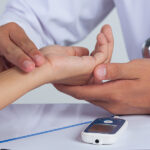
A heart attack is a life-changing situation, and a part of the recovery process is making the necessary decisions about the alternative in case of surgery. Although the idea of returning to heart health may feel overwhelming, being conscious of your surgery options ensures that you are aligned with your care team and clarifies what is best for your specific case. Heart failure treatment is when the capacity of the heart to transport blood is compromised, and in most cases, some surgery is essential for the recovery of normalcy and preventing other complications.
1. Understanding Your Heart’s Needs After an Attack
The heart muscle could also be damaged after a cardiac attack, leading to a loss of its ability to pump blood effectively. The degree and the point of this damage determine whether surgery for heart attack, to help you recover after a heart attack, will become a part of your healing procedure. To normalize the blood flow and prevent further cardiac attacks, medication and lifestyle treatment instructions may suffice in some patients, whereas surgery will be required in others. Your heart doctor will undertake extensive procedures of investigations like stress tests, echocardiograms, and angiograms to ascertain the condition of the heart and coronary arteries. Such a comprehensive assessment will help to establish the most constructive way forward in your specific case.
2. Angioplasty: The Minimally Invasive Lifesaver
Angioplasty is one of the most common post-heart attack recovering methods that is less invasive as compared to the heart open surgery. The process refers to the insertion of a slim catheter using a tiny balloon and reaching the clogged coronary artery with the help of an artery most likely situated in your groin or wrist. As an act to restore blood flow to your heart muscle, the balloon is then inflated to smash the plaque against the arterial wall. Most angioplasty procedures are also modified by an implantation procedure that places a small mesh tube, commonly referred to as a stent, into the artery to ensure it remains open in the long term.
3. Coronary Bypass Surgery: Building New Pathways
The optimum treatment plan follows when angioplasty is not suitable or where there is a large number of arteries that are greatly blocked; the recommended treatment is coronary artery bypass grafting (CABG). In this surgical procedure, the blood vessels in other parts of your body, which would be your arm, your leg, or your chest, are implanted to create new passages to bypass the clogged arteries. To enable the blood to freely circulate to your heart muscle, the surgeon places these grafts to your coronary arteries above and below the blockage. The number of blockages as well as the location of the arteries will determine the use of a single, double, triple, or quadruple bypass.
4. Valve Replacement: Fixing the Heart’s Doors
A heart attack may sometimes damage the valves of the heart, which act as doors that control the flow of blood through the chambers of the heart. When such valves become seriously ill or damaged, there might be a necessity to replace them so as to restore proper functioning of the heart. A biological or a mechanical valve is inserted, but during valve replacement surgery, to replace the damaged valve, an individual may use either a biological valve that contains human or animal tissues or a mechanical valve that is made up of durable material. Biological valves might have to be replaced in 10 to 15 years, and a patient does not have to be on permanent anticoagulation therapy, yet mechanical valves outlive and require permanent blood-thinning medication.
5. Factors That Guide Your Surgical Decision
The suitability of a particular surgical procedure in the recovery process of your heart attack is based on several major factors. This is highly dependent on your age and overall health since older people have a reduced ability to withstand different types of treatment and recovery procedures. The location and the extent of your coronary artery blockages determine whether to have an angioplasty or a bypass surgery, as to which would be of greater use. This is also highly significant in terms of the lifestyle choices you have in terms of how active you can be and whether you are willing to become a long-term user of drugs or not.
6. Recovery Expectations: What Lies Ahead
The recovery period will be easier to prepare for both psychologically and physically, as you will understand what you have to go through during it. Despite the fact that it is recommended that a person should avoid heavy lifting and intense exercising during the couple of weeks after an angioplasty, patients are now able to heal faster, and within a week after the process, they will be in a position to perform their normal duties again. The bypass procedure requires a longer recovery; the recovery will always go on a span of six to eight weeks, with four to six days at the hospital. Depending on the type of method used, the period taken to recover after a valve is replaced may take longer or shorter. This is because less invasive procedures may result in an increased recovery rate compared to open-heart surgery.
7. Preparing Your Mind and Body for Surgery
Mental preparation will always go hand in hand with physical preparation, as much as cardiac surgery is a necessity, and rehabilitation is the main agenda. Prior to your process, concentrate on staying in a good mood and any issues or anxieties; discuss the same with a counsellor or your healthcare team. Physical preparation involves strict adherence to the preoperative measures, which may include ceasing the prescription of some medications, starving before surgery, and carrying out any medical examinations that are required. Stay strong before the treatment commences through small exercises recommended by a doctor. Prepare your home to be in a recovery position and make sure you have a comfortable place to sleep, stock up on medicines, and get someone to help you with providing daily essentials.
8. Long-Term Lifestyle Changes for Heart Health
Outside the operating room, surviving a heart attack involves the willingness to change one’s long-term lifestyle. To prevent further heart complications, a low-processed, low-saturated-fat diet and a low-sodium diet rich in fruits, vegetables, whole grains, and lean proteins must be provided. Workout also enhances the overall cardiovascular fitness and increases the heart muscle strength as prescribed by your heart doctor. Smoking cessation is rather a necessity since tobacco use can complicate the recovery process and expose an individual to heart diseases later in life to a significant extent.
Conclusion
You should never make decisions about the type of heart failure surgery in Gurgaon used in recovering from your heart attack in a vacuum. Work very closely with your heart surgeon, cardiologist, and other medical practitioners so as to understand all your options available and any risks and benefits thereof. You should not feel shy to seek a second opinion in case you are not sure of the proposed line of treatment. Although you actively participate in the choice of procedures to be carried out in treating yourself, you should trust the capabilities of your health care providers. Also, remember that new heart surgery is quite successful in good hands at well-equipped medical establishments.


